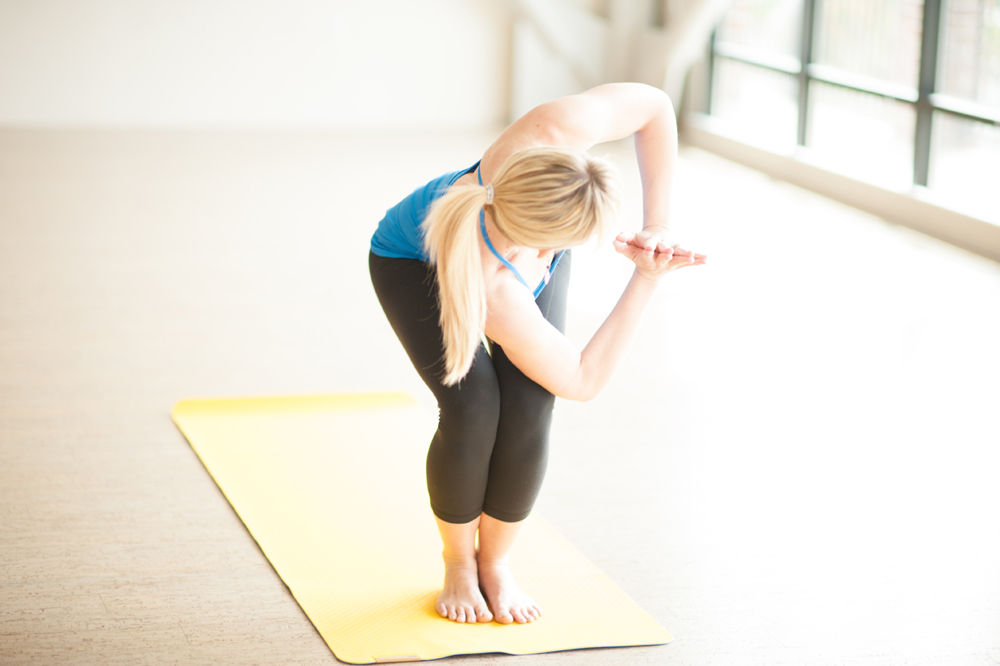 Utkatasana is popularly known as “Chair Pose.” But I can’t imagine that ancient yogis—who had never seen, let alone sat in a chair—would have invented a word for “chair” just in case. Truth is, they didn’t. Instead, the root word—utkata—means “fierce.”
Utkatasana is popularly known as “Chair Pose.” But I can’t imagine that ancient yogis—who had never seen, let alone sat in a chair—would have invented a word for “chair” just in case. Truth is, they didn’t. Instead, the root word—utkata—means “fierce.”
Utkatasana, a pose that strengthens the legs, feet and abdominals, is a staple in my healthy hips regimen. It strengthens muscles that can help stabilize hypermobile hips. In addition, it strengthens the core. The revolved version, Parvrtta Utkatasana, adds a thoracic spine rotation that can help soften shoulder tension.
One of the keys to releasing upper body tension is to stabilize your base. Utkatasana grounds the feet, and strongly focuses energy in the legs. When the upper body is supported by the lower body, it feels “safe” to release its holding pattern. And who doesn’t, at least sometimes, experience upper body tension?
Safe Twisting
Another element of my healthy hips philosophy is that when you are rotating your upper body, it’s important to allow the pelvis to rotate too. The lumbar spine is not designed to twist. So keeping the pelvis square in revolved poses can create unhealthy leverage on the sacroiliac joint, which is also not designed to twist. Twisting the SI joint can cause dysfunction, and can lead to painful conditions such as sciatica.
How to Practice Parvrtta Utkatasana
- Stand in Tadasana on a nonskid yoga mat. Your feet can be together or hips-width apart.
- Place your hands on your hips.
- Point your tailbone back (tilting the top of your pelvis forward), so that your knees bend and your torso extends forward.
- Plant your heels to activate the backs of your legs.
- Place your hands in Anjali Mudra.
- As your rotate your upper body toward the right, allow your right hip to draw back. Your left knee will end up a little in front of your right knee.
- Place your left elbow on the outside of the right knee.
- Replant your feet, especially your heels, and lengthen your torso.
- Take care not to turn your head up toward the sky. Look straight ahead so that your head and neck remain neutral.
- Take 5 to 10 deep breaths.
- Unwind your torso, straighten your knees and return to Tadasana.
- Repeat on the other side.
